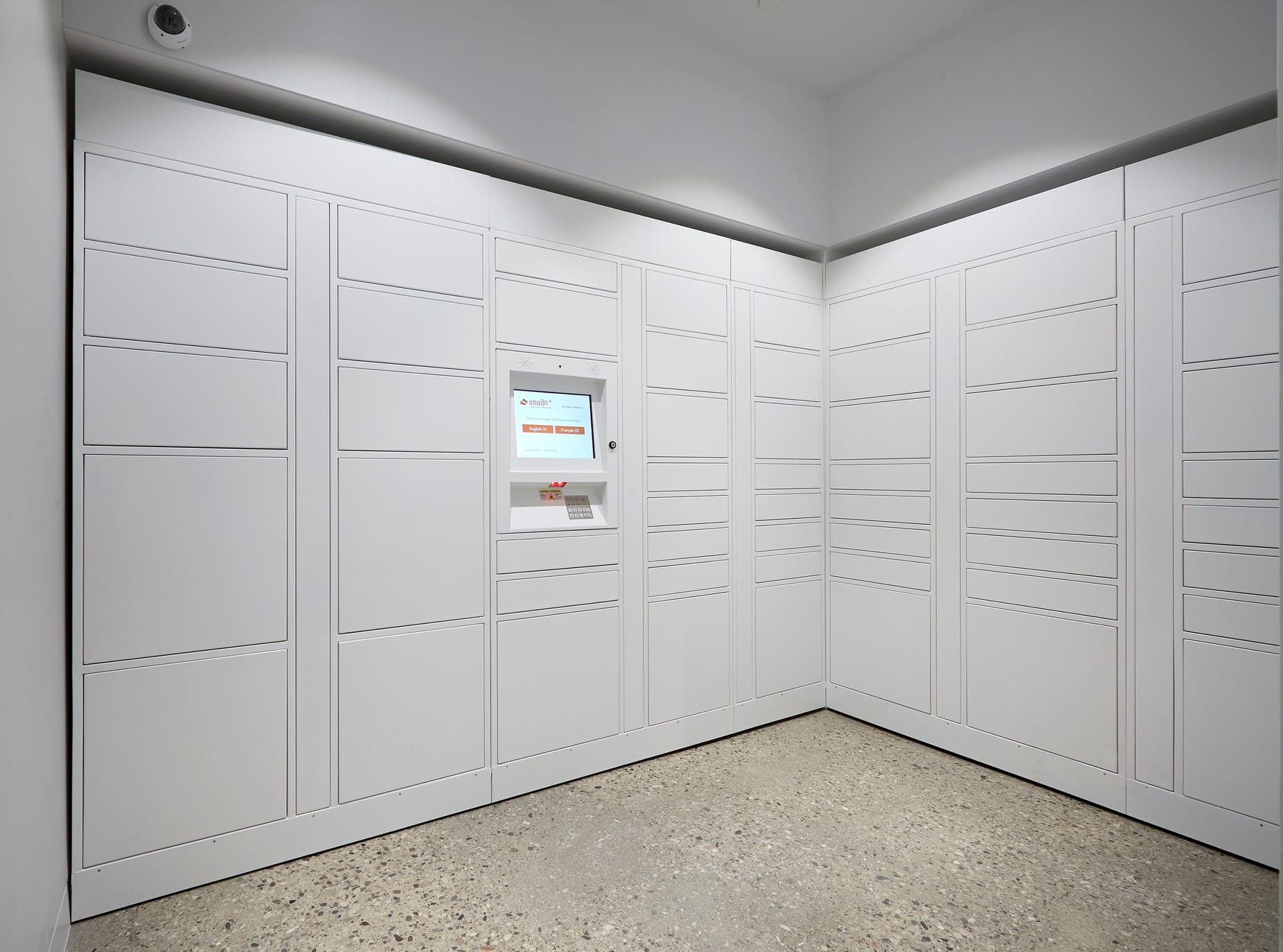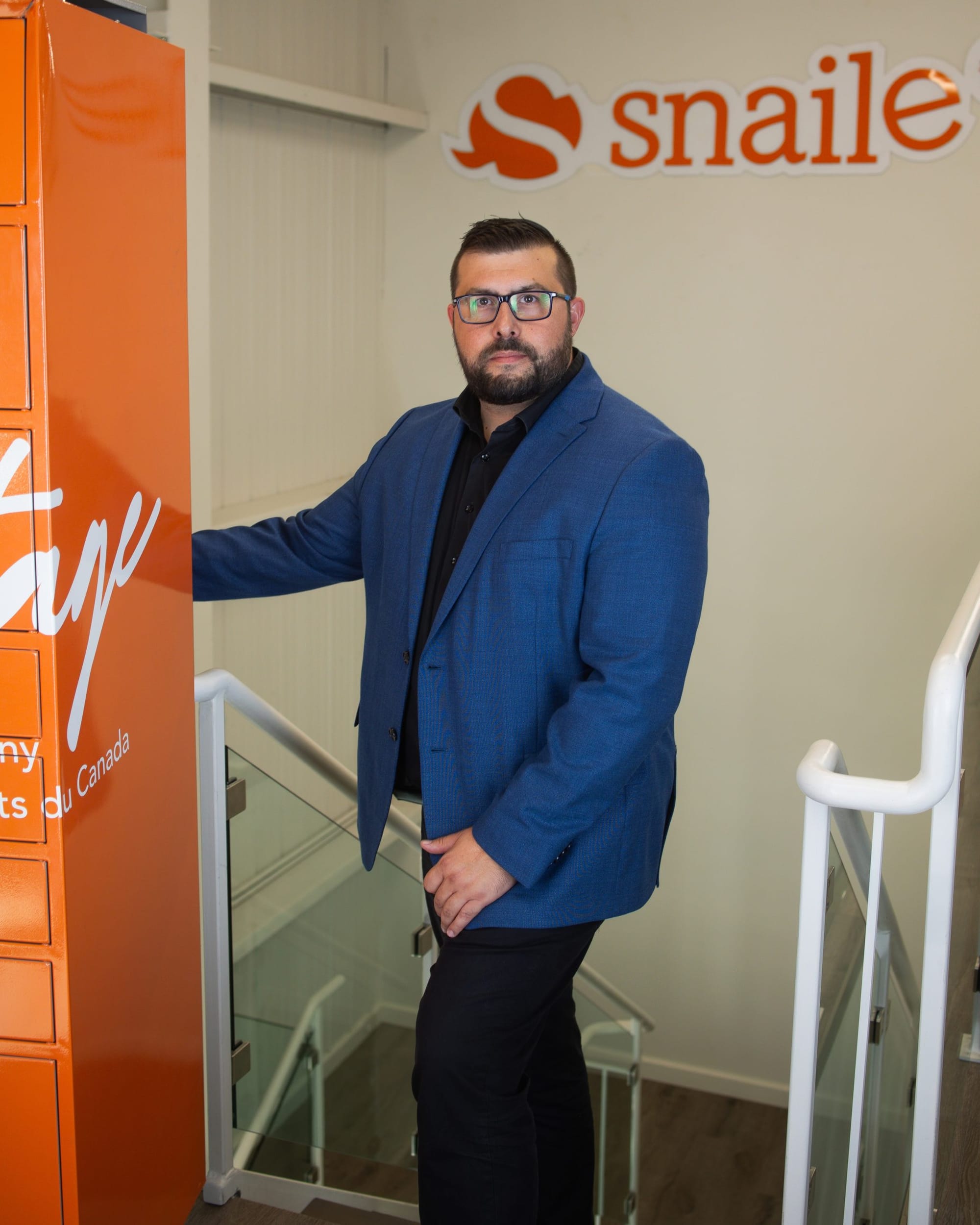Logistics
Security in smart locker systems

Introduction
2024 was a big year for smart locker systems. Valued at around USD 2.9 billion, the market is projected to reach USD 9.1 billion by 2032, growing at a steady 15.3% compound annual growth rate (CAGR). Smart lockers are making waves in retail, logistics, healthcare, and education by offering automated, tech-powered storage solutions. These systems utilize technologies such as RFID, biometric authentication, and real-time tracking to enhance convenience and efficiency.
But with that convenience comes the need for strong security. These systems are not immune to cyber threats. For example, the "droplock" exploit highlights how compromised lockers can collect biometric data without consent. To address these risks, manufacturers are focusing on end-to-end encryption, multi-factor authentication, and regular firmware updates.
Mobile apps integration for improving security
The role of mobile apps in security
The integration of mobile applications with smart locker systems is a crucial step in enhancing security and user experience. Mobile apps provide users with real-time notifications, remote access capabilities, and seamless authentication processes. However, the proliferation of mobile threats necessitates robust security measures for mobile apps. In the first half of 2024, 35% of iOS vulnerabilities were classified as high or critical, underscoring the need for vigilant security practices in mobile application development. Implementing secure coding practices, regular security assessments, and user education are vital steps in safeguarding mobile interfaces associated with smart locker systems.
Integration challenges and best practices
Security aside, mobile integration also introduces technical challenges. Smart lockers often need to integrate with existing platforms, such as ERP systems, CRMs, and logistics networks. Without smooth integration, user experience can suffer — imagine being unable to open your locker because of a sync issue.
To make everything work together, companies should:
- Use standardized APIs
- Apply middleware solutions
- Run thorough system testing
These steps help ensure that data flows consistently and systems communicate with each other smoothly.
Snaile is a Canadian company specializing in the design, manufacture, and support of smart parcel locker systems. Founded in 2015 and headquartered in Huntsville, Ontario, Snaile offers fully integrated locker solutions custom-made for various sectors, including multi-residential properties, retail outlets, commercial buildings, and educational institutions across Canada. Their lockers are built to withstand Canadian climates, rated to -40°C, and are compliant with national standards, including PIPEDA for data privacy and ISO 27001 for information security.
Snaile's systems are designed to be carrier-agnostic, allowing access to all delivery services, and are managed through a cloud-based platform hosted in Canada. The company emphasizes seamless integration with existing infrastructures, offering REST APIs for compatibility with property management and logistics systems. Additionally, Snaile provides 24/7 bilingual support and next-business-day on-site service, ensuring reliable operation and customer satisfaction.
In 2024, Snaile partnered with ElifTech, a forward-thinking software development and consulting company, recognized for its engineering-driven approach and product-oriented mindset. This collaboration aims to integrate a mobile app into the Snaile system, making their lockers more secure and user-friendly. In this article, co-authored by Jonathan Szucs, we address the critical questions about why mobile app integration is essential for the smart locker system.
1. What inspired the development of the mobile app, and how does it enhance Snaile’s existing smart locker system?
“The development of the mobile app was really a natural extension of our vision to streamline and modernize last-mile delivery. While our smart lockers already solve critical logistical challenges, we saw an opportunity to further enhance convenience, security, and user engagement through a mobile platform. The app acts as a direct interface between the user and the locker network, allowing for seamless locker access, real-time updates, and a far more intuitive experience. It essentially puts the power of the locker right into the user’s hand, removing friction from the process and making parcel management faster, easier, and more secure.”
2. In what ways does the app reflect Snaile’s commitment to innovation and forward-thinking technology?
“Innovation isn’t just a buzzword for us — it’s embedded in everything we do. The app reflects this by incorporating advanced security features, and we are planning on adding new features like real-time tracking, and a highly intuitive interface that makes interacting with our lockers effortless. It’s also built on a scalable framework, which means we can rapidly deploy new features as market demands evolve. From integrating with our proprietary software platform to supporting future AI-driven capabilities, the app is designed not just for today’s needs, but to meet the challenges of tomorrow’s logistics landscape.”
3. How do real-time alerts improve security and the overall experience for both customers and businesses?
“Real-time alerts are critical in building trust and delivering a superior user experience. For customers, it means they’re always informed—whether a package has arrived, been retrieved, or if there’s an unusual access attempt. That level of transparency creates confidence and convenience. For businesses, it provides critical visibility into locker usage and package flow, helping to mitigate risks, reduce potential liability, and improve operational efficiency. Essentially, it creates a closed loop of accountability that benefits everyone involved.”
4. How does the app give businesses better insights through data, and how can they use it to simplify operations?
“The app provides businesses with actionable data through detailed analytics on locker utilization, delivery patterns, and user behavior. With these insights, companies can optimize delivery schedules, predict peak usage times, and allocate resources more efficiently. It also helps identify underperforming locations or operational bottlenecks, allowing businesses to make informed, data-driven decisions. This level of transparency simplifies day-to-day operations and supports long-term strategic planning.”
5. Snaile has been a leader in smart parcel solutions — how does this app reinforce that position and differentiate your offering?
“This app reinforces our leadership by pushing the boundaries of what smart parcel solutions can offer. While others are still catching up to the basics of locker deployment, we’re moving the conversation forward into full ecosystem integration—hardware, software, and user experience all working together. The app is a critical part of that ecosystem, creating a seamless interaction between the physical and digital environments. It’s not just about lockers anymore; it’s about creating a truly intelligent last-mile delivery infrastructure that differentiates us from competitors who don’t have this level of vertical integration.”
6. What role did ElifTech play in bringing this app to life, and what were some key challenges along the way?
“ElifTech played a significant role as our technology partner, helping us translate our strategic vision into a functional and scalable application. One of the biggest challenges was ensuring the app’s security and compliance, particularly when dealing with sensitive deliveries. We also needed to ensure that the user interface remained simple and intuitive while handling complex backend integrations with our proprietary systems. Through close collaboration, we overcame these challenges and built a product that meets the high standards of both our business partners and end-users.”
7. As AI becomes an increasingly significant part of logistics and parcel management, how does Snaile utilize this technology?
“AI is absolutely central to where the industry is heading, and we’re already leveraging it in key areas of our operations. From predictive maintenance of our locker hardware to advanced analytics that optimize locker placement and usage patterns, AI helps us stay ahead of logistical challenges. We’re also exploring AI-driven fraud detection and advanced user verification methods to further secure our network. Looking ahead, AI will play an even larger role in dynamic routing, real-time delivery optimization, and personalizing the user experience across our platform.”
8. Looking ahead, how do you see the future of smart locker technology evolving, and what’s next for Snaile?
“The future of smart locker technology is all about integration and adaptability. As e-commerce continues to grow, the demand for secure, efficient, and contactless delivery solutions will only increase. We see lockers becoming critical nodes in a larger logistics network that incorporates AI, autonomous delivery vehicles, and real-time supply chain visibility. For Snaile, the next steps involve expanding our open-access, carrier-agnostic locker network across Canada and into new markets, deepening our software capabilities, and continuing to lead the industry through innovation. The app is just the beginning of what’s coming next.”
The future is smart and secure
Snaile and ElifTech's partnership is a strong example of what happens when you combine innovative thinking with smart execution. Their new mobile app doesn’t just make locker systems more secure — it also makes them easier to use.
Looking ahead, the next generation of smart lockers will go beyond just being secure storage. We’ll see full integration with AI, predictive analytics, autonomous delivery, and real-time logistics tracking. The companies investing today in solid infrastructure, user-friendly interfaces, and dependable tech partners will be tomorrow's industry leaders.
With companies like Snaile leading the charge, the smart locker industry is ready to meet the evolving needs of our fast-paced, digital-first world.

